Digital compatibility is no longer optional in modern dental lab partnerships — it’s the backbone of reliable, repeatable, and scalable case delivery. For procurement teams, choosing a lab that aligns with your digital systems means fewer remakes, faster turnaround, and smoother collaboration.
To make an informed decision, dental procurement managers and lab coordinators must evaluate key factors such as file format support (e.g., STL, PLY), scanner compatibility, CAD/CAM software alignment, and real-time feedback capacity.
This guide breaks down:
- How to identify whether a lab is truly “digitally ready”
- What to standardize in your case submission process
- What questions to ask during supplier evaluation
- How Raytops supports global clients with seamless file integration, feedback loops, and technical alignment
Use this framework to screen potential partners, conduct file tests, and align expectations — before your next digital case leaves the scanner.
Why Does Digital Compatibility Matter in Dental Lab Partnerships?
Digital compatibility is not just a technical checkbox—it’s the backbone of efficiency, accuracy, and cost control in modern dental workflows. When labs and clinics operate on mismatched digital systems, errors multiply, turnaround times stretch, and trust is undermined. A truly compatible digital partnership ensures smoother collaboration, faster case handling, and fewer remakes—all of which directly impact patient satisfaction and your bottom line.

Digital-Workflow-Incompatibility-Dental-Lab
What can go wrong if digital systems are misaligned?
Incompatible digital systems between the clinic and the dental lab can result in miscommunication, unusable files, and workflow breakdowns. These issues often arise when the scanner output format isn’t readable by the lab’s software or when naming conventions and data structures are inconsistent.
- File rejection or processing delays due to unsupported file formats or misaligned scanner export settings.
- Data corruption or loss during manual conversions or uploads between systems.
- Communication breakdown when labs and clinics lack a shared standard for submission.
When these errors accumulate, it’s not just about lost time—it directly increases remake rates and patient dissatisfaction.
How does digital integration impact turnaround and case accuracy?
A well-integrated digital workflow dramatically shortens the case lifecycle and improves overall restoration accuracy. Clinics working with compatible labs experience:
- Faster turnaround times, thanks to reduced manual intervention.
- Higher consistency in margin clarity and fit, enabled by standardized interpretation of scan data.
- Reduced need for adjustments or remakes, which leads to better patient outcomes.
According to this study on CAD/CAM digital dentistry workflow, digital synchronization reduces technical error rates by over 30% in crown and bridge cases.
What are the hidden costs of incompatible workflows?
Misalignment doesn’t just cost time—it erodes profit margins and team efficiency:
- Increased chair time for adjustments or rescheduling
- More staff hours spent resolving preventable issues
- Higher remake rates that aren’t always billable
- Reduced patient trust, especially when delays are visible
Even when not immediately obvious, these inefficiencies add up across multiple cases, silently inflating operational costs.
✅ Workflow misalignment always leads to hidden costs – TRUE
Even small compatibility gaps, such as naming mismatches or unsupported file types, can accumulate into significant delays and remakes over time.
❌ All digital systems are universally compatible – FALSE
In reality, scanner outputs and lab design systems often require deliberate setup, configuration, and mutual understanding before seamless integration is possible.
What File Formats and Scanner Systems Should Be Compatible?
For seamless digital case collaboration, your dental lab must be able to work with your file types and scanner system without needing extra conversion, adjustment, or workaround. This compatibility ensures smooth intake, accurate design, and faster turnaround.
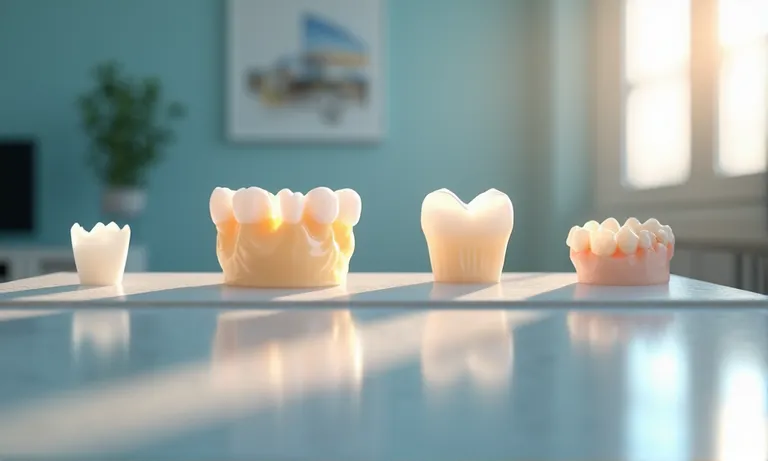
Digital-Dental-File-Format-and-Scanner-Compatibility
Which file types are typically used in digital dentistry? (STL, PLY, etc.)
Most digital impressions are exported in STL, PLY, or OBJ formats. Among these, STL (Stereolithography) is the most universally accepted and widely used in restorative dentistry.
- STL: Contains geometry data only. Works across almost all CAD/CAM systems.
- PLY: Includes color and texture information (useful in implant and aesthetic zones).
- OBJ: Rare in lab workflows, mostly used for 3D visualization.
A reliable lab should be able to process these formats natively, without data loss. More detail on formats is available via this dental STL and PLY file format basics overview.
How to check if the lab supports your scanner brand and software?
Before sending your first case, it’s critical to confirm that the lab:
- Accepts uploads directly from your scanner portal (e.g., iTero, 3Shape Communicate, Medit Link)
- Supports your scanner’s native file format (e.g., STL from Medit or PLY from TRIOS)
- Uses compatible viewing/design software (e.g., Exocad, 3Shape Dental System)
Labs experienced in working with multiple platforms often provide intake guides or preset portal settings to streamline scanner-to-lab transmission.
Can the lab work with both open and closed scanner systems?
Not all scanner systems are equally open. Here’s how labs typically handle them:
- Open systems (e.g., Medit, TRIOS): Export STL/PLY files freely. Most labs prefer these for simplicity.
- Semi-open systems (e.g., iTero): Require authorized lab connection or case transfer via portal.
- Closed systems (e.g., CEREC): Need specific setup or pre-registered collaboration workflows.
Labs familiar with these nuances will proactively help clients set up proper connections and ensure scan fidelity is preserved across systems.
Key Takeaways
- Most dental labs can process STL, but PLY is increasingly valuable for soft tissue and implant visualization.
- Scanner compatibility includes not just file types, but portal connection and viewing systems.
- Always verify whether the lab accepts direct uploads from your scanner software.
How to Assess a Lab’s CAD/CAM and Design Software Capabilities?
Evaluating a dental lab’s CAD/CAM software setup is critical to ensuring your digital cases are interpreted, designed, and manufactured with precision. Compatibility goes beyond file acceptance—it includes how the lab processes, visualizes, and interprets your scan data through their digital tools.
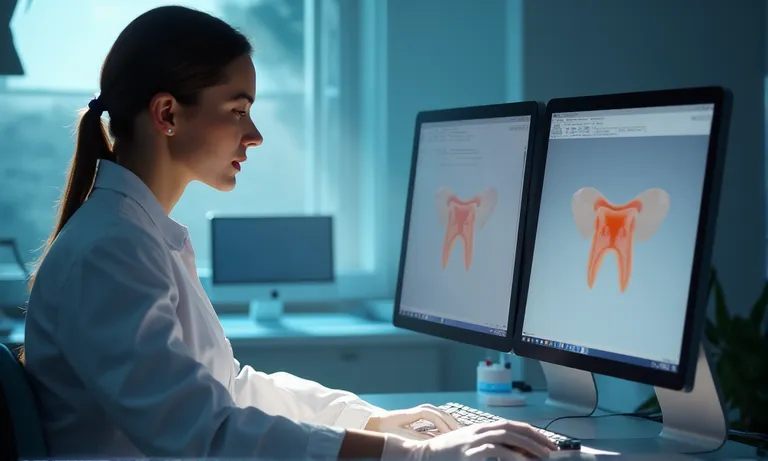
Dental-CADCAM-Compatibility-Assessment
What CAD/CAM software does the lab use and is it compatible with your cases?
A lab’s CAD/CAM stack typically includes design software (like Exocad or 3Shape) and milling CAM platforms. Ensuring compatibility means checking both the software’s capacity and the lab technician’s proficiency.
- Exocad: Highly modular and widely adopted for crown, bridge, implant and full-arch cases. Very STL-friendly.
- 3Shape Dental System: Deep integration with TRIOS scans and DSO workflows.
- Dental Wings / Sirona inLab: Often used in specific regional markets or closed systems.
Your lab should be able to tell you not only which platforms they use, but how they optimize scan data to fit your case type. See the Exocad DentalCAD official software page for detailed features.
How to verify the lab’s design and milling precision?
Here’s a 4-step way to assess digital execution quality from your lab:
- Request a test design output: Ask for a screenshot or viewer file from a real case.
- Review margin trace quality: Are the lines clear, continuous, and well-isolated?
- Check design library application: Are anatomical forms well-matched to patient data?
- Inquire about milling validation: Is the design post-processed and reviewed before fabrication?
What indicators suggest a lab is digitally mature?
| Indicator | Digitally Mature Lab | Digitally Immature Lab |
|---|---|---|
| File intake response | Same-day file confirmation | Delayed or manual reply |
| Viewer clarity | Clean visualization with annotations | Basic or unedited screenshots |
| Margin control | Verified and optimized before milling | Raw scan with unclear trim lines |
| Communication | Design preview + feedback loop | No preview, production only |
✅ Design software compatibility requires both platform and human expertise – TRUE
Software is only as effective as the technician operating it. Compatibility means aligning both tools and skillsets.
❌ If a lab accepts STL files, it’s ready for any case – FALSE
STL acceptance is just the first step. Precision in design, margin control, and post-design feedback matter just as much.
What Should a Standard Digital Case Submission Process Include?
Establishing a clear, structured submission process helps ensure your digital cases arrive with all necessary data intact and ready for production. Labs that standardize intake steps reduce errors, save time, and avoid remake delays due to missing or mislabeled files.
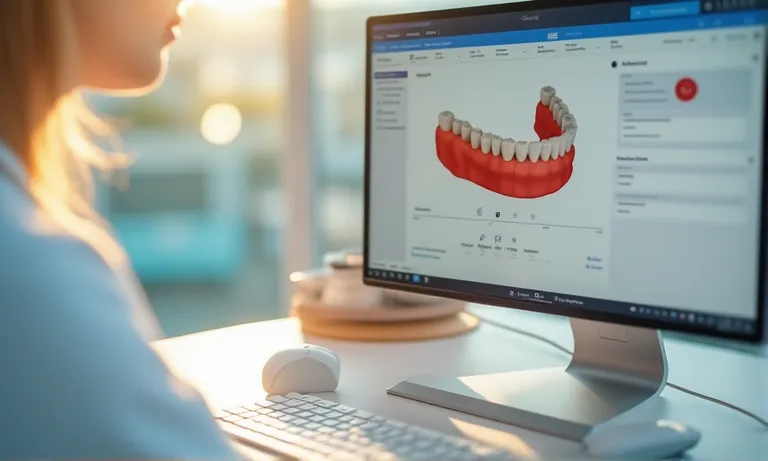
Standard-Digital-Dental-Case-Submission-Checklist
How should files be named and structured to avoid confusion?
Correctly naming and structuring your submission files ensures smooth intake and proper interpretation by the lab team.
- Use a clear case ID (e.g., “Johnson_UR6_Crown_0725.stl”)
- Specify arch and unit in the filename (UR6, LL1, etc.)
- Keep scan files and photos in separate folders
- Avoid spaces or special characters in filenames (use underscores)
This helps the lab quickly locate relevant files and understand case requirements without needing clarification.
Does the lab provide standardized forms or submission templates?
Experienced labs typically offer downloadable templates or submission forms that help unify expectations. These forms often include:
- Case type selection (e.g., single crown, bridge, implant)
- Restoration material choice
- Special design notes (e.g., margin placement, pontic design)
- Return preference (digital only or with model)
How can a digital intake checklist reduce errors and remakes?
Using a submission checklist acts as a final quality gate before the case is sent out. A proper checklist helps ensure:
- Required files (STL, Rx form, photos) are all attached
- Patient and tooth info match between form and file names
- Notes for special margins, occlusion, or contacts are not forgotten
- Upload is confirmed through portal or email receipt
Labs working with repeat clients often co-create branded checklist templates to streamline this step.
Key Submission Elements to Standardize
- Clear file naming convention
- Completed intake form with case specs
- Final review using a digital checklist before sending
- File confirmation received from the lab after upload
How to Evaluate Real-Time Communication in Digital Case Handling?
Responsive, real-time communication during digital case handling is a strong indicator of a lab’s operational maturity. Beyond simply accepting files, a digitally aligned lab proactively flags issues, shares scan previews, and helps correct margin or fit concerns before production begins.
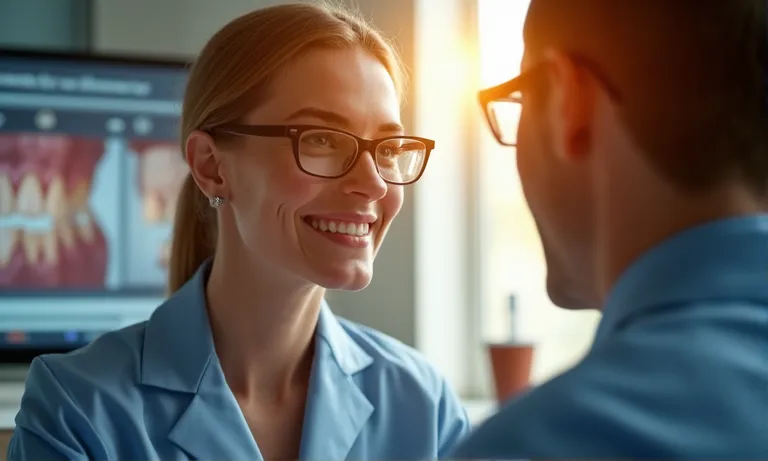
Real-Time-Collaboration-Dental-Case-Handling
Does the lab offer scan previews or margin approval before production?
A digitally capable lab often includes scan preview or margin line verification in its workflow before milling or printing starts. These collaborative steps reduce remakes and strengthen trust.
- Margin design confirmation: Clients are shown visual overlays and asked to approve or comment.
- Occlusal clearance checks: Areas of insufficient space flagged with color mapping.
- Cross-platform viewer access: Labs provide web viewers or screenshots for quick review.
These checkpoints allow clinical teams to intervene early, ensuring restorations match expectations. Learn more about how margin approval works in CAD/CAM labs.
How quickly does the lab provide feedback on scan/file issues?
Turnaround speed isn’t just about production—issue response time matters just as much:
- Same-day feedback: Top-tier labs review new cases within hours of upload.
- Dedicated digital coordinators: Assigned staff monitors portal submissions and flags problems proactively.
- Automated alerts: Some labs offer systems that auto-notify when critical data is missing (Rx form, scan, etc.)
If file errors linger unnoticed for days, production timelines suffer and patient appointments get delayed.
Can you expect active collaboration when problems arise?
| Communication Criteria | Proactive Lab | Passive Lab |
|---|---|---|
| Scan preview before milling | ✅ Provided | ❌ Not included |
| Margin/fit issue feedback | ✅ Within 24h | ❌ Only if asked |
| Response to scan upload | ✅ Confirmation within 2–4h | ❌ Delayed or silent |
| Case change request | ✅ Visible log with timestamp | ❌ Informal email thread |
✅ Scan previews and margin feedback reduce remakes significantly – TRUE
When clients can review digital margins pre-production, misfits and returns drop dramatically.
❌ Email replies alone indicate a collaborative lab – FALSE
While response is necessary, true collaboration involves proactive quality checks, case previews, and two-way feedback loops.
What Questions Should You Ask When Auditing a Digital-Ready Lab?
Before sending a test case or committing to a long-term partnership, it’s critical to ask the right questions about a lab’s digital infrastructure. These targeted questions help assess whether the lab can integrate into your workflow without friction.
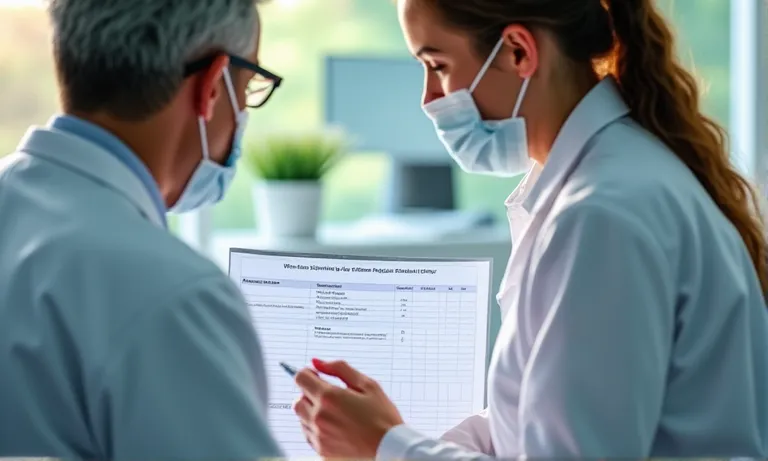
Digital-Lab-Partner-Audit-Checklist
Do you support STL/PLY from [your scanner model]?
Not all labs are equally flexible with scanner data. Ask:
- “Do you accept files directly from iTero / Medit / Primescan / 3Shape?”
- “Can you handle both STL and PLY files?”
- “If I use a closed system, do you offer conversion support?”
Some scanners lock data within proprietary formats. A flexible lab will have access to bridges or licenses to unlock that data, ensuring seamless integration.
What CAD system do you use? Is it compatible with ours?
Use the table below to match CAD design platforms with your internal system or file outputs.
| CAD Software | Common Use Case | Compatible Output | Fit with Client System |
|---|---|---|---|
| 3Shape | Crowns/Bridges | STL, DCM | ✅ High (open) |
| exocad | Implants/Dentures | STL, PLY | ✅ High (open) |
| Dental Wings | Full arch cases | proprietary, STL | ⚠️ Medium (conversion may be needed) |
| Sirona | CEREC crowns | .DXD | ❌ Low (unless converted) |
Compatibility gaps often lead to case errors or redesign requests. Understanding what the lab works with helps set expectations early. Refer to this Digital Lab Evaluation Checklist by IDT for a deeper dive.
Can I submit a test case and review your digital feedback workflow?
A trial case reveals how a lab operates in real conditions. When proposing this:
- Upload STL or PLY file + Rx + any photos
- Ask the lab to process the case and return a margin review or design preview
- Evaluate if the communication was timely, helpful, and complete
- Confirm how edits or remake decisions are handled digitally
- Check if they store and version case files for traceability
Trial submissions expose how robust and responsive the lab’s digital intake truly is.
To recap, here are 6 key questions to guide your audit of a digital-ready lab:
- Which scanner brands and file types do you support?
- Do you work with both STL and PLY? Any support for closed systems?
- What CAD software do you use? Is it open or proprietary?
- How do you handle file naming and margin validation?
- What’s your average response time for scan issues?
- Can I try a test case to experience your digital flow?
How Does Raytops Support Seamless Digital Collaboration as a Global Partner?
For global clinics, DSOs, and distributors, collaborating with a dental lab that can “speak digital fluently” is no longer optional — it’s essential. Raytops Dental Lab supports full-spectrum digital compatibility across systems, formats, and workflows to ensure alignment from scan to seat.
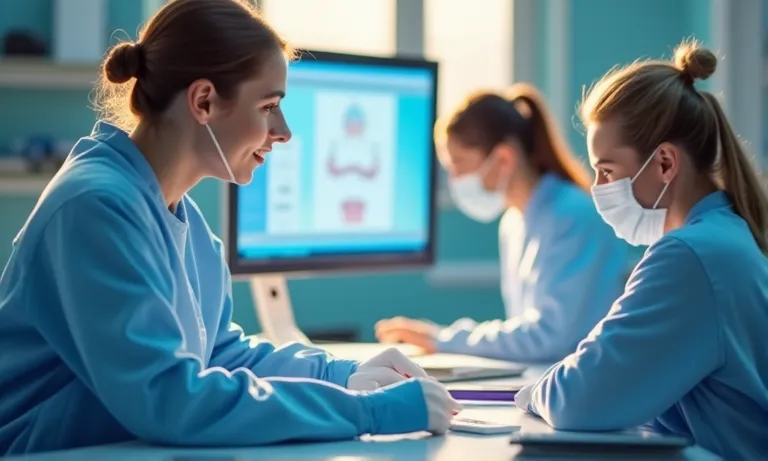
Global-Dental-Lab-Digital-Collaboration-Workflow
Compatibility with major scanner brands and platforms
We support a broad range of intraoral scanners and digital systems, ensuring smooth file transmission and workflow integration.
- 3Shape, iTero, Medit, Primescan, and Carestream: full STL/PLY acceptance
- Closed scanner data: support for proprietary conversion when possible
- Open software systems: compatible with exocad, 3Shape, Dental Wings, and more
Our intake team proactively checks version compatibility and guides clients through system pairing if needed.
STL optimization and margin integrity review during intake
A clean STL file is only the beginning. We perform active validation before design begins.
- Automatic preprocessing to eliminate surface noise or overlapping geometry
- Margin integrity review with screenshots or digital markups sent for confirmation
- Standardized file naming protocols help reduce case confusion
- Reference arch checking to catch articulation misalignment early
Dedicated digital support team for real-time feedback and workflow alignment
Digital support is not a ticketing system — it’s real collaboration.
- Assigned coordinator for each digital client to manage case communication
- Turnaround within 1 business day on scan or design feedback
- Live preview sharing for margin/morphology confirmation
- Feedback loops embedded in every case for ongoing process tuning
This human-centered digital support reduces remakes, improves predictability, and creates the sense of having an “extended team” overseas.
To summarize, Raytops offers:
- Full compatibility with major scanners and CAD platforms
- Standardized intake processes for STL optimization
- Proactive digital support team with real-time communication
This enables our global partners to work with us as if we were just down the street — with no digital friction, no lost cases, and no unexpected surprises.
Conclusion
Digital compatibility is no longer a technical detail — it is a foundational pillar in choosing the right dental lab partner. From file format matching to scanner alignment, from CAD/CAM interoperability to feedback responsiveness, each layer of integration affects clinical outcomes, case turnaround, and the total cost of collaboration.
By thoroughly assessing a lab’s digital capabilities, dental professionals can prevent costly workflow disruptions and build smoother, scalable partnerships.
As a global dental lab partner, Raytops supports full-spectrum digital collaboration — seamlessly connecting with leading scanner brands, optimizing STL workflows, and providing human-centered, real-time digital support. Whether you’re a single clinic or a multi-site DSO, we work as your extended digital team — reliably, precisely, and proactively.
When evaluating a lab’s digital readiness, it’s not just about the tech — it’s about whether they’re ready to collaborate.


